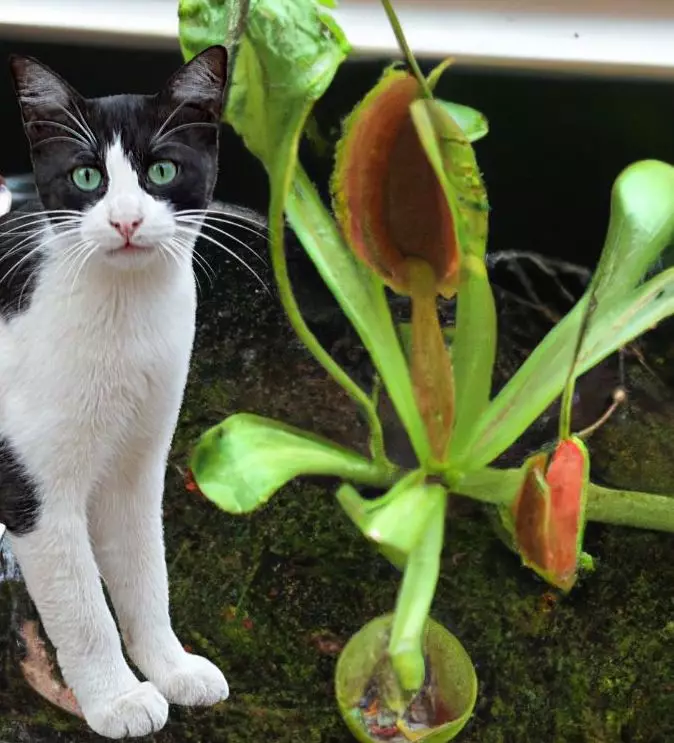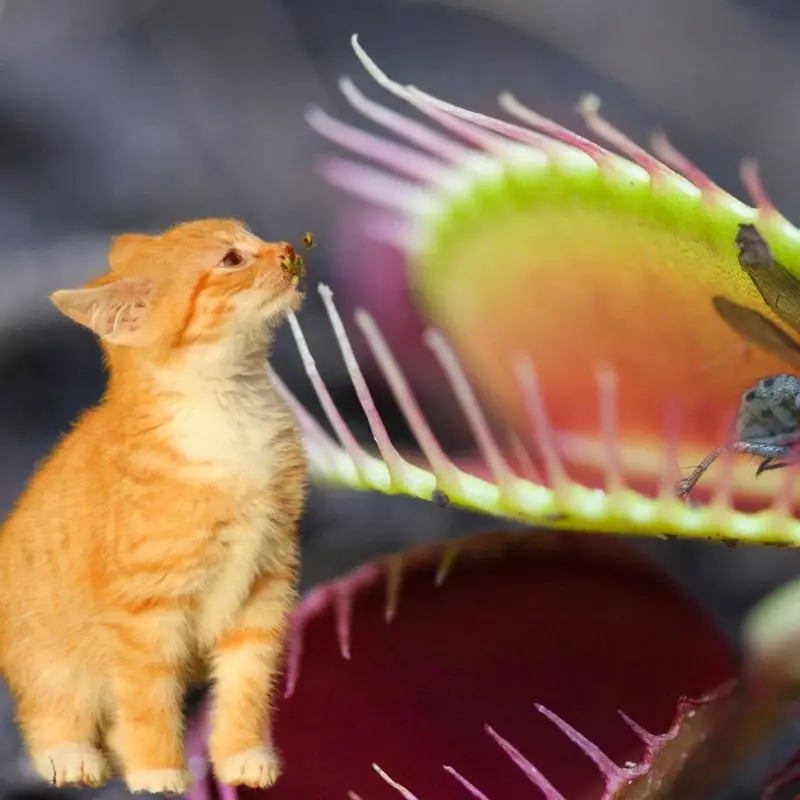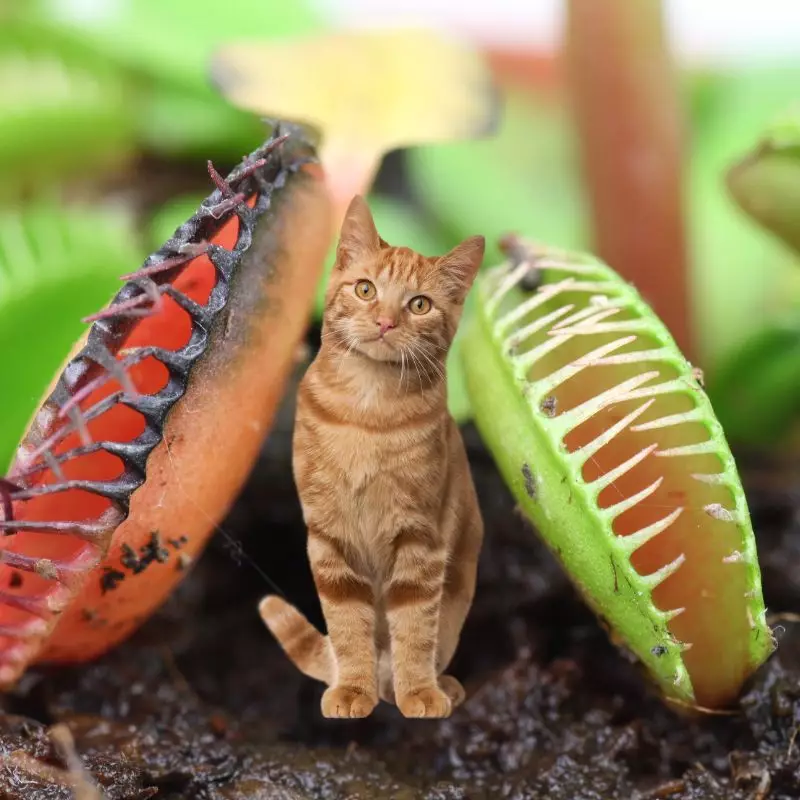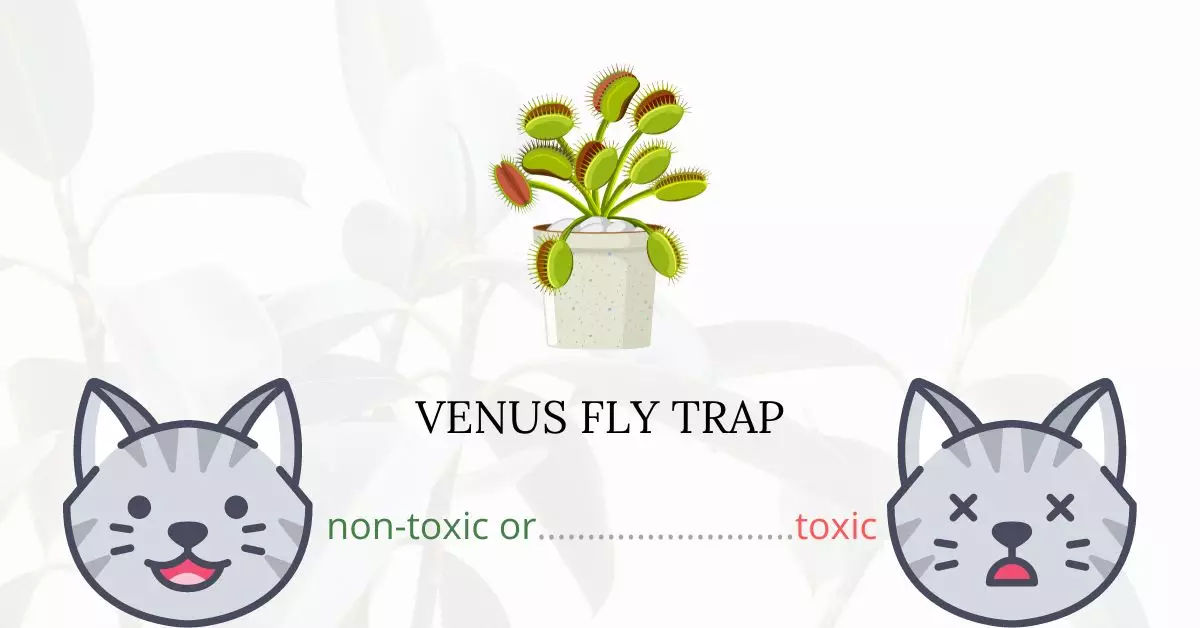No, Venus Fly Traps are not toxic to cats. If you’ve been wondering whether this unique plant poses a threat to your feline friend, rest assured that according to high-authority sources such as the ASPCA and PetMD, Venus Fly Traps are considered non-toxic plants for cats. However, for the safety of the plant itself, given its delicate nature, it’s a good idea to keep it out of reach if your cat is particularly curious.
This article is written in collaboration with a team of experienced DVMs (doctors of veterinary medicine). With their expert insights, we aim to provide accurate and up-to-date information on the potential risks associated with various plants, focusing on the Venus Fly Trap in this context, and their effects on cats.
Can Cats Eat Venus Fly Trap?

If you have Venus flytrap plants at home, you don’t need to be particularly worried about your cat’s health. Flytraps are not poisonous to cats and humans. These plants emit a scent that attracts insects, but because it is sour and a little fruity, most cats do not appear to be drawn to them.
Venus flytraps are attempting to attract insects that consume rotting fruit or flower nectar rather than carnivorous mammals. If your cat is fond of houseplants, she may give the plant an investigational nibble.
If your cat approaches one of the Venus flytrap heads, she has a very good chance of setting it off. When a cat’s nose or whiskers are detected, a Venus fly trap’s head may snap. No need to fret because the heads are quite small, the teeth are not so sharp, measuring just an inch across, and have a weak grip. Because they are made to catch insects, your cat will probably pull out her nose, paw, or whiskers all at once.
Although the plant is not poisonous, you should keep your cat away from it. Allowing your cat to activate the Venus flytrap plant is not a smart idea. Flytraps use a lot of energy to open and close and is unhealthy for them to shut without food. The Venus flytrap’s sudden movement may startle your cat, which can be an unpleasant experience for her.
What is Venus Fly Trap?

Scientifically known as Dionaea muscipula, the Venus flytrap is a carnivorous plant endemic to North and South Carolina in the United States. This plant traps insects and arachnids using a trapping structure made of the proximal end of each leaf. The “trigger hairs” on the inner surfaces of the leaves, which are very small hairs, activate the trapping structure.
The leaf’s hinged halves snap shut, trapping the prey when insects or spiders irritate any two of the six tactile hairs on the upper surface of the folded leaves. The prey’s chemical secretion stimulates the plant’s digestive enzymes to flow. The nutrients are ingested and the leaf is reset after the prey has been digested.
Keeping Cats Away From Venus Fly Trap

Flytraps are delicate plants that require particular environmental conditions to thrive, so having a cat hurt them won’t improve their chances. If your cat can easily access the flytrap, think about moving it higher or planting it in a hanging pot. You can also contain your flowerpot with a piece of glass or plastic to keep your cat from eating the plant.
Plants to Avoid For Your Cats
If you are a cat owner and unsure if the plants growing in your yard are harmful to your cats, check out this list of toxic plants for cats. You can also check our list of non-toxic plants for cats.





